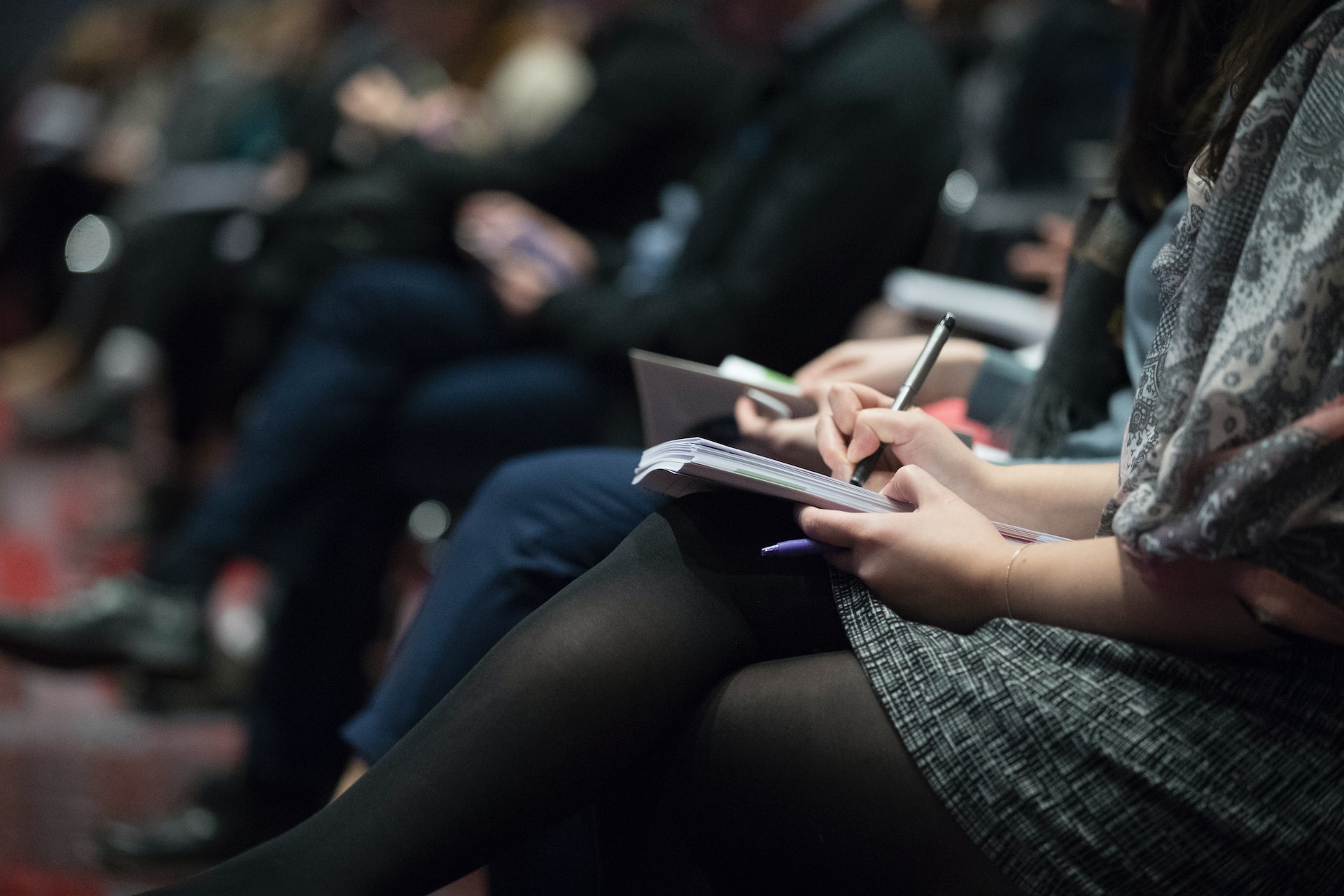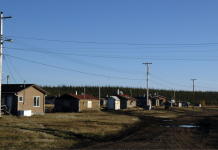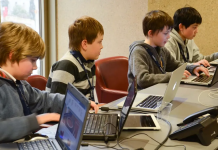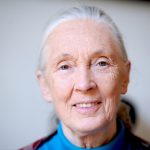Written by: Jill Hopke and Barbara Willard
It has been easy to despair about climate change given a summer of relentless heat waves, wildfires, and catastrophic flooding. Yet, there is reason for hope with high public concern globally and enactment of landmark climate legislation that promises to provide billions of dollars in climate and clean energy initiatives over the next decade. It is, to date, the largest piece of climate change legislation in U.S. history, offering hope when most needed.
Climate change educators face significant challenges in working with high school and college students given their high level of pessimism and despair about the climate crisis. With the start of the new school year, we want to share some lessons learned from teaching on the theme of climate hope at the university level, reflecting our combined two decades-plus of experience leading sustainability, climate, and environmental communication-focused courses.
Both of us have assigned a final project, originally designed by Barb, asking students to imagine a carbon-free society of their choosing in the year 2050.We hope here to contribute to the conversation that Julia Steinberger and Scott Denning started at this site on how to approach climate change in classrooms full of teens and young adults with their whole lives ahead of them.
Addressing Gen Z eco-anxiety
As professors at DePaul University in Chicago, we have found that our students suffer from an eco-anxiety that generations before them could have only imagined as science fiction. Our students, particularly in the Covid-pandemic context, often come to class feeling powerless and expressing a sense of paralysis on the state of the climate crisis.
Students say they talk with their friends and roommates about whether or not to have children and whether it is even worth saving for retirement as the future feels so uncertain. Students question how we can remain hopeful given the evidence of climate change impacts and projections for the future.
A fatalist mindset can result in inaction and withdrawal reflecting their feeling of helplessness. While we need to be honest about the challenges of the climate crisis, we also must give students clear and honest direction about realistic solutions. Sources of inspiration are essential in restoring a commitment to individual and collective action, and students must have hope for society’s collective capacity to act, and also hope in the gains to be made through effective advocacy.
A no-carbon visioning exercise helps students make the conversion to a more positive outlook: Students imagine a future that could be possible if we would just listen to the science. Imagining alternate futures allows us to dwell in the possible and in the process make hope a reality. As reported at this site, recent research suggests that hopeful and inspired imagination about positive climate change outcomes can even influence commitment to climate policy.
Hope motivates engagement and action
A sense of realistic hope is crucial to motivating young adults to take action on climate change. Educators can help students move beyond the limits of imagination for what our communities, and world, could look like with a transition away from fossil fuels. In this context, news coverage and an educational emphasis on climate change impacts – at the expense of discussing climate solutions – give only part of the story. To present the whole picture, we need to show the many solutions that are at hand.
Hope is part of the success equation in the battle against climate change. As climate scientist Katharine Hayhoe recently wrote in her book, Saving Us: A Climate Scientist’s Case for Hope and Healing in a Divided World, hope is an essential part of motivating people to take action on climate change and in providing the necessary emotional state for facing the challenging realities of our current crisis.
Hope, being able to identify needed actions to help achieve desired goals, and fostering agency in that effort
But at a time when humanity needs to harness hope, it is sorely lacking. Author and educator Erin Kelsey argues that in addition to the climate crisis we also have a crisis of hope. Things need to change. Hope can guide us through the overwhelming challenges presented by the climate challenge.
The late psychologist and expert on hope, Charles R. Snyder, defines hope as the ability to identify specific actions to move toward desired goals and the perceived capability to use one’s agency to follow those pathways. Hope allows us to identify goals we want to achieve, define specific paths to get there, and motivate ourselves to follow those paths towards accomplishment. Ultimately, hope leads to accomplishment and motivates us to move forward.
DePaul graduate Lukas Gilkeson sees hope as a practical tool. He is applying what he learned to building a community seed library in Chicago. “The no-carbon 2050 assignment was one of the last projects I completed at the university,” he says. “For me, it was a sort of remarkable opportunity to thread together many of the ideas and theories I’d been working through in other environmental studies courses in the previous four years.”
The transformative power of hope
Reframing the overarching narrative on the state of the climate is critical, thereby giving Gen Z young adults mechanisms to develop what Christiana Figueres and Tom Rivett-Carnac call “stubborn optimism.”
Toward this end, our students envision what a society not dependent on fossil fuels could look like. The assignment prompt asks students to reimagine social life to vision-build for a carbonless 2050, with the more frequent and damaging catastrophic environmental scenarios now confronting us put aside in favor of a more hopeful and inspirational message. In their essays, students depict a no-carbon lifestyle in a specific community of their choosing, imagining what life could look like if necessary steps are taken now to avert climate catastrophe.
Students research realistic possibilities for a future by examining proposed policies and nascent but promising technological solutions. Projecting these research-based possibilities out into the future inspires a realistic sense of hope, as opposed to a utopian vision or magical thinking. Many students take a creative writing approach to the project, often reimagining life in their hometowns in a more sustainable future.
DePaul students have written, for example, about Chicago as a zero-carbon city powered by renewable energy, with expanded and electrified public transportation; sustainable, local urban agriculture; and public spaces as community and relationship building in equitable neighborhoods. They envision a sustainable Oklahoma as lived in by their own imagined future child who is part of a “green” generation to come; a diary in the year 2050 of a then-middle aged former student visiting her coastal hometown retrofitted with flood-resistant infrastructure; and protection of coastal ecosystems and a travel brochure. These are among students’ many innovative visions for a low-carbon future.
“For the no carbon 2050 vision-building project,” says DePaul student Emily Hamilton, “I was able to delve into sectors of the economy like urban development and agriculture, and find a proactive perspective, instead of giving into climate nihilism.”
Course evaluations point to early hopeless despair, followed by a shift to engagement.
Some might argue that asking students to envision no-carbon future scenarios is pie-in-the-sky thinking. Not so. Former students say this thought exercise helped change their perspectives. It challenges them to reimagine the technical aspects of future societies and also to envision communities and social relationships that center around social and economic justice. They imagine communities with clean air and fresh water and access to healthy food and education; free from environmental racism and resulting inequities long disproportionately burdening low-income individuals and communities of color.
Course evaluations reveal both the depth of their despair about the climate crisis coming into our classes and the potential for a transformative shift in agency afterward. Students say they feel more informed about climate change and its impacts and confident to talk about the issue with diverse audiences. They’ve come away more hopeful.
“I thought that we were all doomed and that nothing [was] really going to change,” one student wrote. “I now think that there is hope and we still have time to fix things.”
Another student simply said that the class “help[ed] me not to think all is lost.” And yet another student gained the perspective that “there is still hope for the future.”
Realism as a bridge to hope
In her provocative article, Julia Steinberger discusses using the mitigation slides from IPCC-AR6-WGIII in her presentations to high school students. By extending the assignment our students have completed, we think a future visioning exercise could incorporate some of these mitigations.
In addition, Project Drawdown offers a detailed, data-oriented review of climate solutions, which climate change educators could also use. Similarly, students could select elements of the newly enacted Inflation Reduction Act and project out the potential impacts of this legislation. In this fashion, students see a path forward, and could be motivated to act on political initiatives and civic involvement, foreseeing positive outcomes.
So students would envision in their essays how things could turn out in 2050 if mitigation strategies are implemented. This way they envision the outcomes suggested by the IPCC. We plan to implement this version of the assignment in the coming academic year, weaving additional realism into the vision-building exercise. We hope other educators will share ideas or collaborate.
Working with college students gives us hope. Our own teaching and climate engagement are inspired and better informed by our seeing through the eyes of students, and by the inspiration they gather from researching climate change solutions, policies, and other existing possibilities.
Header Image Credit: The Climate Reality Project
This article originally appeared on Yale Climate Connections







